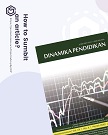Learning Engagement Effect on Satisfaction, and Future Preferences of Online Tax Brevet
(1) Departemen Ilmu Administrasi Fiskal, Fakultas Ilmu Administrasi, Universitas Indonesia
(2) Departemen Ilmu Administrasi Fiskal, Fakultas Ilmu Administrasi, Universitas Indonesia
Abstract
This study investigates the factors that influence student satisfaction with online tax brevet and their preferences in the future, using theory of perceived user satisfaction. There have been several studies examining tax education, but research on technology-based tax education is still difficult to find. Using an online survey distributed in August – September 2021, data were collected from 106 participants who have or are currently taking online tax brevet. The data is then processed by the PLS-SEM method. This study found that technology and course had a significant effect on student satisfaction, on the other hand, teacher, communication, Covid-19 impact, and sudden change did not have a significant effect. On student involvement, it was found that only motivation had a significant effect, while self-efficacy and anxiety had no significant effect. In this study, student involvement was also indicated to have a significant effect on student satisfaction and learning outcomes. Student satisfaction itself also has an influence on student decisions in the future to continue using online tax brevet technology. To maintain the future preferences of students, tax brevet organizers can increase student motivation with a more interactive learning system.
Keywords
Full Text:
PDFReferences
Abbas, T. M. (2017). Human factors affecting university hospitality and tourism students’ intention to use e-learning: A comparative study between Egypt and the UK. Journal of Human Resources in Hospitality and Tourism, 16(4), 349–366. https://doi.org/10.1080/15332845.2017.1266866
Al-Fraihat, D., Joy, M., Masa’deh, R., & Sinclair, J. (2020). Evaluating E-learning systems success: An empirical study. Computers in Human Behavior, 102(March 2019), 67–86. https://doi.org/10.1016/j.chb.2019.08.004
Barak, M., Watted, A., & Haick, H. (2016). Motivation to learn in massive open online courses: Examining aspects of language and social engagement. Computers and Education, 94, 49–60. https://doi.org/10.1016/j.compedu.2015.11.010
Cao, W., Fang, Z., Hou, G., Han, M., Xu, X., Dong, J., & Zheng, J. (2020). The psychological impact of the COVID-19 epidemic on college students in China. Psychiatry Research, 287(March), 112934. https://doi.org/10.1016/j.psychres.2020.112934
Dennen, V. P., Darabi, A. A., & Smith, L. J. (2007). Instructor-learner interaction in online courses: The relative perceived importance of particular instructor actions on performance and satisfaction. Distance Education, 28(1), 65–79. https://doi.org/10.1080/01587910701305319
Gonzales, A. L., McCrory Calarco, J., & Lynch, T. (2020). Technology Problems and Student Achievement Gaps: A Validation and Extension of the Technology Maintenance Construct. Communication Research, 47(5), 750–770. https://doi.org/10.1177/0093650218796366
Hair, J. F., Sarstedt, M., Ringle, C. M., & Mena, J. A. (2012). An assessment of the use of partial least squares structural equation modeling in marketing research. Journal of the Academy of Marketing Science, 40(3), 414–433. https://doi.org/10.1007/s11747-011-0261-6
Heilporn, G., Lakhal, S., & Bélisle, M. (n.d.). An examination of teachers’ strategies to foster student engagement in blended learning in higher education. https://doi.org/10.1186/s41239-021-00260-3
Heilporn, G., Lakhal, S., & Bélisle, M. (2021). An examination of teachers’ strategies to foster student engagement in blended learning in higher education. International Journal of Educational Technology in Higher Education, 18(1). https://doi.org/10.1186/s41239-021-00260-3
Heriyanto, Prasetyawan, Y. Y., & Krismayani, I. (2021). Distance learning information literacy: Undergraduate students experience distance learning during the COVID-19 setting. Information Development, 1–9. https://doi.org/10.1177/02666669211018248
Huang, L., Zhang, J., & Liu, Y. (2017). Antecedents of student MOOC revisit intention: Moderation effect of course difficulty. International Journal of Information Management, 37(2), 84–91. https://doi.org/10.1016/j.ijinfomgt.2016.12.002
Istijanto. (2021). The effects of perceived quality differences between the traditional classroom and online distance learning on student satisfaction: evidence from COVID-19 pandemic in Indonesia. Quality Assurance in Education. https://doi.org/10.1108/QAE-08-2020-0098
Kandiko Howson, C., & Matos, F. (2021). Student surveys: Measuring the relationship between satisfaction and engagement. Education Sciences, 11(6). https://doi.org/10.3390/educsci11060297
Kim, S., & Kim, D. J. (2021). Structural relationship of key factors for student satisfaction and achievement in asynchronous online learning. Sustainability (Switzerland), 13(12). https://doi.org/10.3390/su13126734
Koob, C., Schröpfer, K., Coenen, M., Kus, S., & Schmidt, N. (2021). Factors influencing study engagement during the COVID-19 pandemic: A cross-sectional study among health and social professions students. PLoS ONE, 16(7 July), 1–19. https://doi.org/10.1371/journal.pone.0255191
Lee, S., Shin, H. H., & Jeong, M. (2020). Are Students Ready for Their Future Career in the Event and Meeting Industry? Lessons from a Comparative Study between Students and Event and Meeting Professionals. Journal of Hospitality and Tourism Education, 32(2), 77–87. https://doi.org/10.1080/10963758.2019.1654886
Lei, S. I., & So, A. S. I. (2021). Online Teaching and Learning Experiences During the COVID-19 Pandemic–A Comparison of Teacher and Student Perceptions. Journal of Hospitality and Tourism Education, 33(3), 148–162. https://doi.org/10.1080/10963758.2021.1907196
Luo, Y., Geng, C., Pei, X., Chen, X., & Zou, Z. (2021). The Evaluation of the Distance Learning Combining Webinars and Virtual Simulations for Senior Nursing Students during the COVID-19 Period. Clinical Simulation in Nursing, 57, 31–40. https://doi.org/10.1016/j.ecns.2021.04.022
Ma, Z., Idris, S., Zhang, Y., Zewen, L., Wali, A., Ji, Y., Pan, Q., & Baloch, Z. (2021). The impact of COVID-19 pandemic outbreak on education and mental health of Chinese children aged 7–15 years: an online survey. BMC Pediatrics, 21(1), 1–8. https://doi.org/10.1186/s12887-021-02550-1
Pozón-López, I., Higueras-Castillo, E., Muñoz-Leiva, F., & Liébana-Cabanillas, F. J. (2021). Perceived user satisfaction and intention to use massive open online courses (MOOCs). In Journal of Computing in Higher Education (Vol. 33, Issue 1). Springer US. https://doi.org/10.1007/s12528-020-09257-9
Prasetyo, Y. T., Ong, A. K. S., Concepcion, G. K. F., Navata, F. M. B., Robles, R. A. V., Tomagos, I. J. T., Young, M. N., Diaz, J. F. T., Nadlifatin, R., & Redi, A. A. N. P. (2021). Determining Factors Affecting Acceptance of E-Learning Platforms during the COVID-19 Pandemic: Integrating Extended Technology Acceptance Model and DeLone & McLean IS Success Model. Sustainability, 13(15), 8365. https://doi.org/10.3390/su13158365
Prior, D. D., Mazanov, J., Meacheam, D., Heaslip, G., & Hanson, J. (2016). Attitude, digital literacy and self efficacy: Flow-on effects for online learning behavior. Internet and Higher Education, 29, 91–97. https://doi.org/10.1016/j.iheduc.2016.01.001
Quesada-Pallarès, C., Sánchez-Martí, A., Ciraso-Calí, A., & Pineda-Herrero, P. (2019). Online vs. Classroom Learning: Examining Motivational and Self-Regulated Learning Strategies Among Vocational Education and Training Students. Frontiers in Psychology, 10(December). https://doi.org/10.3389/fpsyg.2019.02795
Saragih, A. H., Adwie, J., & Hendrawan, A. (2021). Determinants and Consequences of Students Learning Satisfaction During Covid-19 Pandemic. Jurnal Ilmiah Akuntansi Dan Bisnis, 16(1), 1. https://doi.org/10.24843/jiab.2021.v16.i01.p01
Sarstedt, M., Ringle, C. M., & Hair, J. F. (2020). Handbook of Market Research. In Handbook of Market Research (Issue September). https://doi.org/10.1007/978-3-319-05542-8
Son, C., Hegde, S., Smith, A., Wang, X., & Sasangohar, F. (2020). Effects of COVID-19 on college students’ mental health in the United States: Interview survey study. Journal of Medical Internet Research, 22(9), 1–14. https://doi.org/10.2196/21279
Sugeng, & Prasetyo, E. (2021). Pilihan Karir Sebagai Konsultan Pajak Dengan Pelatihan Brevet Pajak. Jurnal Akuntansi Dan Ekonomi, 6(1), 1–15. https://doi.org/10.29407/jae.v6i1.14600
Wardoyo, C. (2016). Developing learning media based on e-learning on accounting subject for senior high school students. Dinamika Pendidikan, 11(2), 84-93.
Williams, K. M., Stafford, R. E., Corliss, S. B., & Reilly, E. D. (2018). Examining student characteristics, goals, and engagement in Massive Open Online Courses. Computers and Education, 126(February 2017), 433–442. https://doi.org/10.1016/j.compedu.2018.08.014
Zaed, I., & Tinterri, B. (2020). Letter to the Editor: How is COVID-19 Going to Affect Education in Neurosurgery? A Step Toward a New Era of Educational Training. World Neurosurgery, 140, 481–483. https://doi.org/10.1016/j.wneu.2020.06.032
Zapata-Cuervo, N., Montes-Guerra, M. I., Shin, H. H., Jeong, M., & Cho, M. H. (2021). Students’ Psychological Perceptions Toward Online Learning Engagement and Outcomes during the COVID-19 Pandemic: A Comparative Analysis of Students in Three Different Countries. Journal of Hospitality and Tourism Education, 00(00), 1–15. https://doi.org/10.1080/10963758.2021.1907195
Zardari, B. A., Hussain, Z., Arain, A. A., Rizvi, W. H., & Vighio, M. S. (2021). Development and validation of user experience-based e-learning acceptance model for sustainable higher education. Sustainability (Switzerland), 13(11), 1–17. https://doi.org/10.3390/su13116201
Zhu, X., Shek, D. T. L., & Chan, C. H. M. (2021). Promoting service leadership qualities and well-being among university students through an online course during covid-19 pandemic. International Journal of Environmental Research and Public Health, 18(15). https://doi.org/10.3390/ijerph18158162
Refbacks
- There are currently no refbacks.

This work is licensed under a Creative Commons Attribution 4.0 International License.

.png)

.png)





